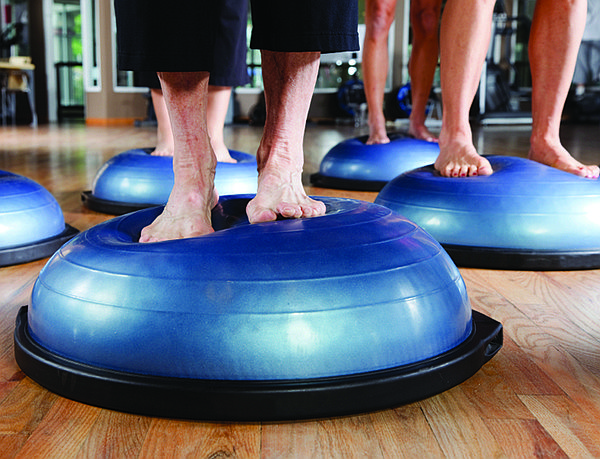- April 19, 2024
-
-
Loading

Loading

It is the busy season. It is the eating, or shall we say overeating, season. All of that and more make it a time of year when it is too easy to make excuses not to exercise.
The reality, of course, is that those time and food pressures actually make it more necessary than ever to not only maintain but, if humanly possible, increase your level of activity. It’s obvious that the more calories you take in the more you need to expend, unless you are willing to face an expanding waistline.
Less obvious but equally important: Physical activity is a vital, nonpharmaceutical remedy for the blues that sometimes descend around the holidays — and one that has no negative side effects.
No matter how well you intellectually know all this — that sedentary is the new smoking and an active lifestyle is life-lengthening — it can still be tough to pull on the sneakers and head out for that walk or go to the gym. So here, just in time to renew your motivation, is a sampling of some of the more recently documented benefits of exercise. Pick the ones that you are most thankful for. Happy Thanksgiving!
Exercise improves brain health
“Physical activity benefits overall brain health by reducing peripheral risk factors for poor mental health, such as inflammation, diabetes, hypertension and cardiovascular disease, and by increasing blood flow and associated delivery of nutrients and energy,” said Angela Clos, Ph.D., professor in the department of psychology at the University of Westminster, London and co-editor of Physical Activity and Mental Health.
Exercise offers relief from depression and anxiety
Physical activity can cause changes in neurochemicals that affect mood, including serotonin, dopamine and gamma-aminobutyric acid, or GABA. Antidepressants and anti-anxiety medications target these neurochemicals, and research shows aerobic exercise can also increase their levels.
Simon Young, Ph.D., former editor in chief of the Journal of Psychiatry and Neuroscience, says, “The effect of exercise on serotonin suggests that the exercise itself, not the rewards that stem from exercise, may be important.”
Dance benefits older adults
Research the St. Louis University Medical Center conducted suggests dancing can ease hip and knee pain that are common among older adults. The 12-week study published in Geriatric Nursing divided 37 seniors aged about 81 into two groups: a Healthy Steps dance therapy group or a wait list control group. The dance group met twice a week for 45 minutes a session. Throughout the study, participants reported less pain and stiffness than before the intervention, and the researchers observed improvements in gait speed. They also recommended that, “Dance-based therapy for older adults needs to be gentle, slow and include options so it can be performed standing or sitting. ... ” In other words, easy on the tempo — and no quick step.
Does cardiovascular exercise improve memory?
In 2013, M. Roig and colleagues published “The effects of cardiovascular exercise on human memory: a review with meta-analysis,” which summarized several recent studies. What everyone wants to know, of course, is whether there is a connection between exercise and Alzheimer’s disease. There is no clear answer; this is a relatively recent area of inquiry, and the findings are directional, not definitive. Acute bouts of brisk walking, cycling or running appear to improve short-term visuospatial memory more than verbal-audio memory, an effect, as luck would have it, more apparent in young adults ages 18 to 24. Investigation of the literature suggests that long-term cardiovascular exercise may meaningfully delay some age-related memory impairments; one study found that the brain’s cognitive networks display improved functionality after six to 12 months of consistent cardiovascular exercise. It also suggests that approximately 150 minutes per week in 20- to 30-minute bouts at an intensity of 60% of heart rate maximum is sufficient (Ahiskog et al., 2011).
Exercise reduces prostate cancer mortality
Men with prostate cancer who exercise vigorously have a reduced risk of all-cause mortality and prostate cancer-specific mortality (Kenfield et al., 2011). Brisk walking and other vigorous activities done at least three hours per week improve prostate cancer-specific survival (Richman et al., 2011). Biking, tennis, jogging and swimming all fit into this category (Kenfield et al., 2011).
Molly Schechter is an ACE-certified personal trainer since 1996. She has a specialty certification in older adult fitness plus YogaFit Instructor Training, SCF Yoga Fundamentals I and II and Power Pilates™ Mat Certifications. She teaches Pilates mat classes and “Joy of Stretch” yoga classes at the Bayfront Park Recreation Center from November through April. Email her at [email protected].